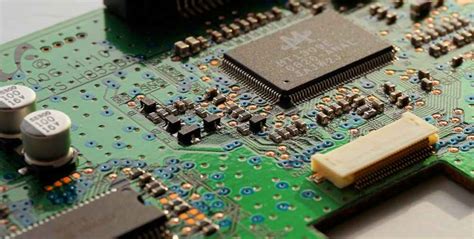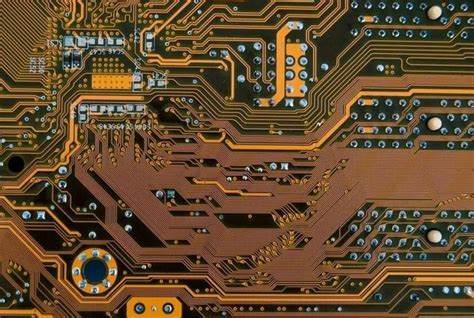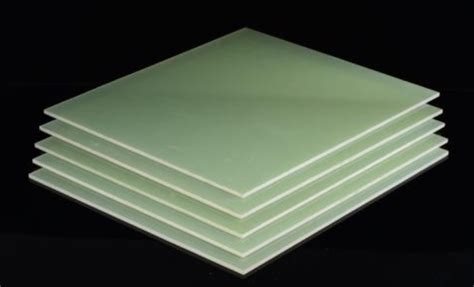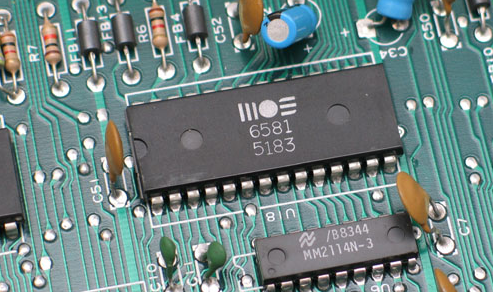Raw material for pcb manufacturing
Importance Of High-Quality Copper Foil In PCB Manufacturing
In the realm of Raw material for pcb manufacturing, the selection of raw materials plays a pivotal role in determining the performance, reliability, and longevity of the final product. Among these materials, high-quality copper foil stands out as a critical component.
The importance of using superior copper foil cannot be overstated, as it directly impacts the electrical conductivity, thermal management, and overall structural integrity of the PCB.
To begin with, copper foil serves as the primary conductive layer in PCBs, facilitating the flow of electrical signals between various components.
The quality of this copper foil is paramount because any impurities or inconsistencies can lead to signal degradation, increased resistance, and potential failure of the circuit. High-quality copper foil ensures a uniform and smooth surface, which is essential for maintaining consistent electrical performance. This uniformity minimizes the risk of signal loss and electromagnetic interference, thereby enhancing the overall efficiency of the PCB.
Moreover, the thermal properties of copper foil are crucial in managing the heat generated by electronic components.
High-quality copper foil exhibits excellent thermal conductivity, which helps in dissipating heat effectively. This is particularly important in high-power applications where excessive heat can lead to component damage and reduced lifespan of the PCB. By using superior copper foil, manufacturers can ensure that the PCB can handle higher thermal loads, thereby improving its reliability and durability.
In addition to electrical and thermal considerations, the mechanical properties of copper foil also play a significant role in PCB manufacturing.
High-quality copper foil offers better adhesion to the substrate material, which is essential for maintaining the structural integrity of the PCB. Poor adhesion can result in delamination, where the copper layer separates from the substrate, leading to circuit failure. Furthermore, high-quality copper foil is less prone to cracking and other forms of mechanical stress, ensuring that the PCB can withstand the rigors of manufacturing processes and operational environments.
Transitioning to the manufacturing process itself, the use of high-quality copper foil can streamline production and reduce defects.
Superior copper foil is easier to etch, allowing for more precise and intricate circuit patterns. This precision is vital for modern PCBs, which often feature complex designs and high-density interconnections. By minimizing defects and ensuring accurate patterning, high-quality copper foil contributes to higher yields and lower production costs.
Furthermore, the environmental impact of PCB manufacturing is an increasingly important consideration.
High-quality copper foil, often produced through more advanced and environmentally friendly processes, can help reduce the ecological footprint of PCB production. These processes typically involve fewer harmful chemicals and generate less waste, aligning with the growing emphasis on sustainable manufacturing practices.
In conclusion, the importance of high-quality copper foil in PCB manufacturing cannot be understated. Its impact on electrical performance, thermal management, mechanical integrity, manufacturing efficiency, and environmental sustainability makes it a cornerstone of modern PCB production. By investing in superior copper foil, manufacturers can ensure that their PCBs meet the stringent demands of today’s electronic devices, ultimately leading to more reliable and efficient products. As technology continues to advance, the role of high-quality copper foil will only become more critical, underscoring the need for ongoing innovation and improvement in this essential material.

Role Of Substrate Materials In PCB Performance
Printed Circuit Boards (PCBs) are the backbone of modern electronic devices, serving as the platform upon which electronic components are mounted and interconnected. The performance, reliability, and longevity of a PCB are significantly influenced by the choice of substrate materials. Substrate materials, often referred to as the base materials, play a crucial role in determining the electrical, thermal, and mechanical properties of the PCB. Understanding the role of these materials is essential for optimizing PCB performance and ensuring the success of electronic products.
One of the most commonly used substrate materials in PCB manufacturing is FR-4, a composite material made of woven fiberglass cloth with an epoxy resin binder that is flame resistant.
FR-4 is favored for its excellent balance of mechanical strength, electrical insulation, and thermal stability. Its dielectric properties make it suitable for a wide range of applications, from consumer electronics to industrial equipment. However, while FR-4 is versatile, it may not be the best choice for high-frequency applications due to its relatively high dielectric constant and loss tangent.
For high-frequency and high-speed digital applications, materials with lower dielectric constants and loss tangents are preferred.
Materials such as Rogers laminates, which are made from a combination of ceramic and PTFE (polytetrafluoroethylene), offer superior performance in these scenarios. These materials provide lower signal loss and better impedance control, which are critical for maintaining signal integrity in high-frequency circuits. Consequently, they are often used in RF (radio frequency) and microwave applications, where even minor signal degradation can lead to significant performance issues.
Thermal management is another critical aspect influenced by substrate materials.
As electronic devices become more powerful and compact, the need for efficient heat dissipation becomes paramount. Materials with high thermal conductivity, such as metal-core PCBs (MCPCBs), are increasingly used in applications where heat dissipation is a concern. MCPCBs typically consist of a metal base, usually aluminum or copper, which helps to dissipate heat away from critical components, thereby enhancing the reliability and lifespan of the device.
In addition to electrical and thermal properties, mechanical properties such as flexibility and durability are also important considerations.
Flexible PCBs, made from materials like polyimide, offer the advantage of being able to bend and conform to complex shapes. This flexibility is particularly useful in applications such as wearable electronics, medical devices, and aerospace, where space constraints and mechanical stress are significant factors. Polyimide substrates are known for their excellent thermal stability and mechanical strength, making them suitable for harsh environments.
Environmental and regulatory considerations also play a role in the selection of substrate materials.
With increasing awareness of environmental impact and the push for sustainable manufacturing practices, materials that are RoHS (Restriction of Hazardous Substances) compliant and halogen-free are gaining popularity. These materials help reduce the environmental footprint of electronic products and ensure compliance with global regulations.
In conclusion, the choice of substrate materials in PCB manufacturing is a critical factor that influences the overall performance, reliability, and sustainability of electronic devices. By carefully selecting materials based on their electrical, thermal, and mechanical properties, manufacturers can optimize PCB performance to meet the specific requirements of various applications. As technology continues to advance, the development of new and improved substrate materials will play a pivotal role in shaping the future of electronics.

Advances In Solder Mask Technology For PCBs
In the realm of printed circuit board (PCB) manufacturing, the evolution of solder mask technology has been pivotal in enhancing the performance, reliability, and longevity of PCBs. Solder masks, which are the protective layers applied to the surface of PCBs, play a crucial role in preventing solder bridges, protecting against environmental damage, and ensuring the overall integrity of the circuit. Recent advances in solder mask technology have introduced significant improvements, driven by the increasing complexity and miniaturization of electronic components.
One of the most notable advancements in solder mask technology is the development of high-resolution photoimageable solder masks.
These masks are formulated to offer superior definition and precision, which is essential for modern PCBs that feature fine-pitch components and intricate circuitry. The high-resolution capability allows for the creation of narrower traces and spaces, thereby accommodating the growing demand for compact and densely packed electronic devices. This advancement not only enhances the electrical performance of the PCB but also contributes to the overall miniaturization of electronic products.
In addition to high-resolution capabilities, the introduction of environmentally friendly solder masks has marked a significant step forward.
Traditional solder masks often contained hazardous substances such as lead and volatile organic compounds (VOCs), posing environmental and health risks. However, the shift towards green manufacturing practices has led to the development of solder masks that are free from these harmful substances. These eco-friendly solder masks not only comply with stringent environmental regulations but also offer comparable, if not superior, performance characteristics. This transition underscores the industry’s commitment to sustainability without compromising on quality.
Moreover, advancements in solder mask materials have resulted in improved thermal and chemical resistance.
As electronic devices are subjected to increasingly harsh operating conditions, the need for solder masks that can withstand high temperatures and aggressive chemicals has become paramount. Modern solder masks are engineered to endure extreme thermal cycling and exposure to corrosive substances, thereby ensuring the durability and reliability of the PCB in demanding applications. This enhancement is particularly beneficial for industries such as automotive, aerospace, and industrial electronics, where PCBs are often exposed to rigorous environments.
Another significant development in solder mask technology is the advent of flexible solder masks.
With the rise of flexible and wearable electronics, there is a growing need for solder masks that can conform to non-rigid substrates. Flexible solder masks are designed to maintain their protective properties while accommodating the bending and flexing of the PCB. This innovation has opened new avenues for the design and application of flexible circuits, enabling the creation of novel electronic devices that were previously unattainable with rigid PCBs.
Furthermore, the integration of advanced application techniques has enhanced the efficiency and precision of solder mask deposition.
Techniques such as laser direct imaging (LDI) and inkjet printing have revolutionized the application process, allowing for greater accuracy and reduced material wastage. These methods enable the precise placement of solder masks, even on complex and densely populated PCBs, thereby improving manufacturing yields and reducing production costs.
In conclusion, the advances in solder mask technology for PCBs have significantly contributed to the progress of electronic manufacturing. High-resolution photoimageable masks, environmentally friendly formulations, improved thermal and chemical resistance, flexible solder masks, and advanced application techniques collectively represent the strides made in this field. As the demand for more sophisticated and reliable electronic devices continues to grow, the ongoing innovation in solder mask technology will undoubtedly play a crucial role in meeting these challenges and driving the future of PCB manufacturing.

Impact Of Laminate Materials On PCB Durability
The impact of laminate materials on PCB durability is a critical consideration in the manufacturing process of printed circuit boards (PCBs). Laminate materials serve as the foundational substrate upon which the entire PCB structure is built, and their properties significantly influence the overall performance, reliability, and longevity of the final product. Understanding the various types of laminate materials and their respective characteristics is essential for manufacturers aiming to produce high-quality, durable PCBs.
One of the most commonly used laminate materials in PCB manufacturing is FR-4, a composite material made of woven fiberglass cloth with an epoxy resin binder.
FR-4 is favored for its excellent mechanical strength, thermal stability, and electrical insulation properties. These attributes make it suitable for a wide range of applications, from consumer electronics to industrial equipment. However, while FR-4 is versatile and cost-effective, it may not always meet the stringent requirements of high-frequency or high-temperature applications.
In such cases, alternative laminate materials such as polyimide, PTFE (polytetrafluoroethylene), and ceramic-filled laminates are often employed.
Polyimide laminates, for instance, offer superior thermal resistance and can withstand continuous operating temperatures of up to 260°C. This makes them ideal for aerospace, military, and other high-reliability applications where extreme environmental conditions are a concern. On the other hand, PTFE laminates are known for their excellent dielectric properties and low signal loss, making them suitable for high-frequency and microwave circuits.
The choice of laminate material also affects the PCB’s ability to resist environmental stressors such as moisture, chemicals, and mechanical wear.
For example, laminates with high glass transition temperatures (Tg) are more resistant to thermal cycling and can better maintain their structural integrity under fluctuating temperatures. This is particularly important in automotive and industrial applications where PCBs are exposed to harsh operating conditions. Additionally, laminates with low water absorption rates are less prone to delamination and other moisture-related failures, thereby enhancing the PCB’s durability.
Moreover, the thermal conductivity of the laminate material plays a crucial role in heat dissipation, which is vital for the longevity of electronic components.
Laminates with higher thermal conductivity can more effectively dissipate heat generated by active components, reducing the risk of thermal damage and extending the lifespan of the PCB. This is especially relevant in power electronics and LED applications where efficient heat management is paramount.
Furthermore, the mechanical properties of the laminate material, such as tensile strength and flexural modulus, determine the PCB’s ability to withstand mechanical stresses during assembly and operation. Laminates with higher mechanical strength can endure the rigors of soldering, handling, and installation without cracking or warping. This ensures that the PCB maintains its structural integrity and continues to function reliably over its intended lifespan.
In conclusion, the selection of laminate materials is a pivotal factor in determining the durability and performance of PCBs. Manufacturers must carefully evaluate the specific requirements of their applications and choose laminates that offer the appropriate balance of thermal, electrical, and mechanical properties. By doing so, they can produce PCBs that not only meet the desired performance criteria but also exhibit enhanced durability and reliability, ultimately leading to more robust and long-lasting electronic devices.




